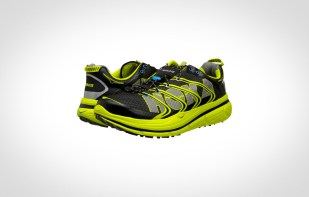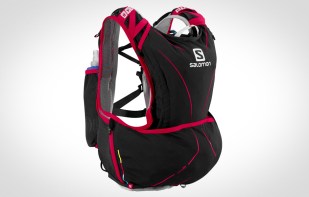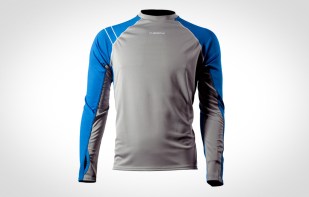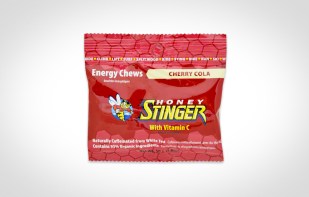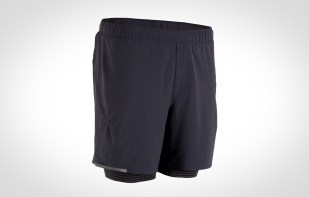It’s easy to take a drive upstate this time of year to enjoy those few golden weeks left of changing leaves and decent weather. It’s a little harder to get out on the trail when the temperatures start to drop and there’s the slightest possibility of snow in the forecast. However, it’s simply too early to admit defeat to winter and head to the gym to run on a treadmill. For those of us that want some extra adventure (and maybe weather induced misery), we’ve got the best trail running gear to extend your season a few more precious days.
 Your first consideration should be about saving your feet and legs. The best shoes make the difference on long miles of trail, and Hoka One One Rapa Nui 2’s let you easily add miles and hours to your long runs. The oversized midsoles take a little getting used to, but the extra cushioning is exactly what you need on rough, wet trails. Don’t be surprised when your PRs on long runs starts to drastically drop.
Your first consideration should be about saving your feet and legs. The best shoes make the difference on long miles of trail, and Hoka One One Rapa Nui 2’s let you easily add miles and hours to your long runs. The oversized midsoles take a little getting used to, but the extra cushioning is exactly what you need on rough, wet trails. Don’t be surprised when your PRs on long runs starts to drastically drop.
 The foundation of any kit is a solid pack. Holding everything you’ll need for a dozen miles on the trail, and staying functional and comfortable is an art. We love the Salomon S-Lab Adv Skin 12 for the way it fits like a vest rather than a traditional pack. It’s got just enough space to carry the essentials – snacks, water, and an extra layer – without overloading.
The foundation of any kit is a solid pack. Holding everything you’ll need for a dozen miles on the trail, and staying functional and comfortable is an art. We love the Salomon S-Lab Adv Skin 12 for the way it fits like a vest rather than a traditional pack. It’s got just enough space to carry the essentials – snacks, water, and an extra layer – without overloading.
 Cold temperatures call for a little extra protection beyond your typical tank top. The La Sportiva Epic shirt doesn’t just provide that extra warmth, but is UPF 50+ rated, and is built with Polygiene permanent anti-microbial and anti-odor technology. Body mapped vents keep you dry even on the longest runs.
Cold temperatures call for a little extra protection beyond your typical tank top. The La Sportiva Epic shirt doesn’t just provide that extra warmth, but is UPF 50+ rated, and is built with Polygiene permanent anti-microbial and anti-odor technology. Body mapped vents keep you dry even on the longest runs.
 You’ve got to have a little extra fuel beyond your hydration pack on long runs, and the typical energy gel just isn’t going to cut it (unless you like sucking down fruit flavored snot). We love the Honey Stinger Organic Chews because not only can we actually pronounce every ingredient, but they taste amazing too. Try the cherry cola flavor – trust us on this one.
You’ve got to have a little extra fuel beyond your hydration pack on long runs, and the typical energy gel just isn’t going to cut it (unless you like sucking down fruit flavored snot). We love the Honey Stinger Organic Chews because not only can we actually pronounce every ingredient, but they taste amazing too. Try the cherry cola flavor – trust us on this one.
 Comfort is everything when you’re and hour from the nearest road. The last thing you want is to be fighting blisters and chafing on top of nasty weather and serious altitude. We’ve covered lululemon before, and for good reason. Their Surge 7 Inch Shorts have seen us through long runs, obstacle course races, and even a GORUCK Challenge. The Luxtreme liner is sweat wicking and just tight enough to provide the perfect amount of comfort no matter how long you’re in them.
Comfort is everything when you’re and hour from the nearest road. The last thing you want is to be fighting blisters and chafing on top of nasty weather and serious altitude. We’ve covered lululemon before, and for good reason. Their Surge 7 Inch Shorts have seen us through long runs, obstacle course races, and even a GORUCK Challenge. The Luxtreme liner is sweat wicking and just tight enough to provide the perfect amount of comfort no matter how long you’re in them.
Photo Courtesy of Salomon/Jordi Saragossa
